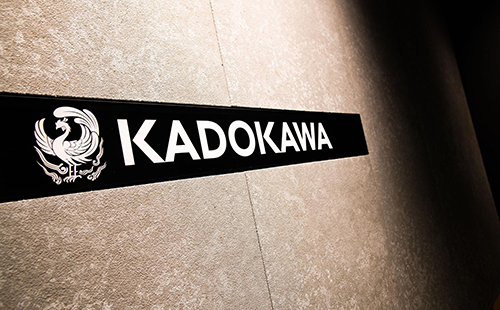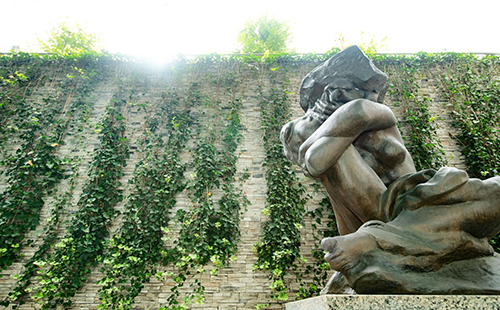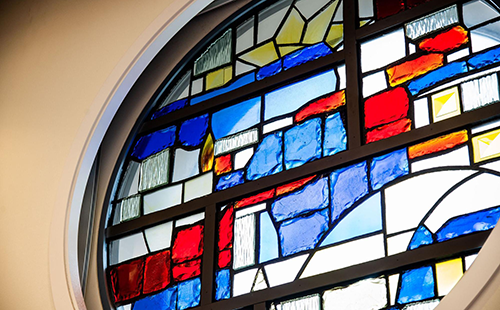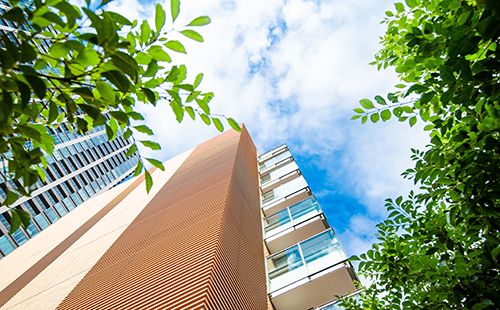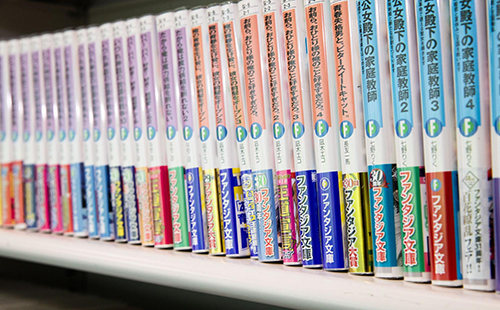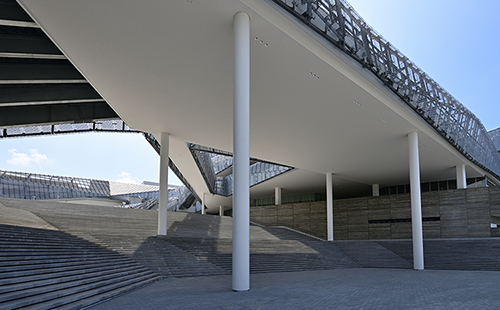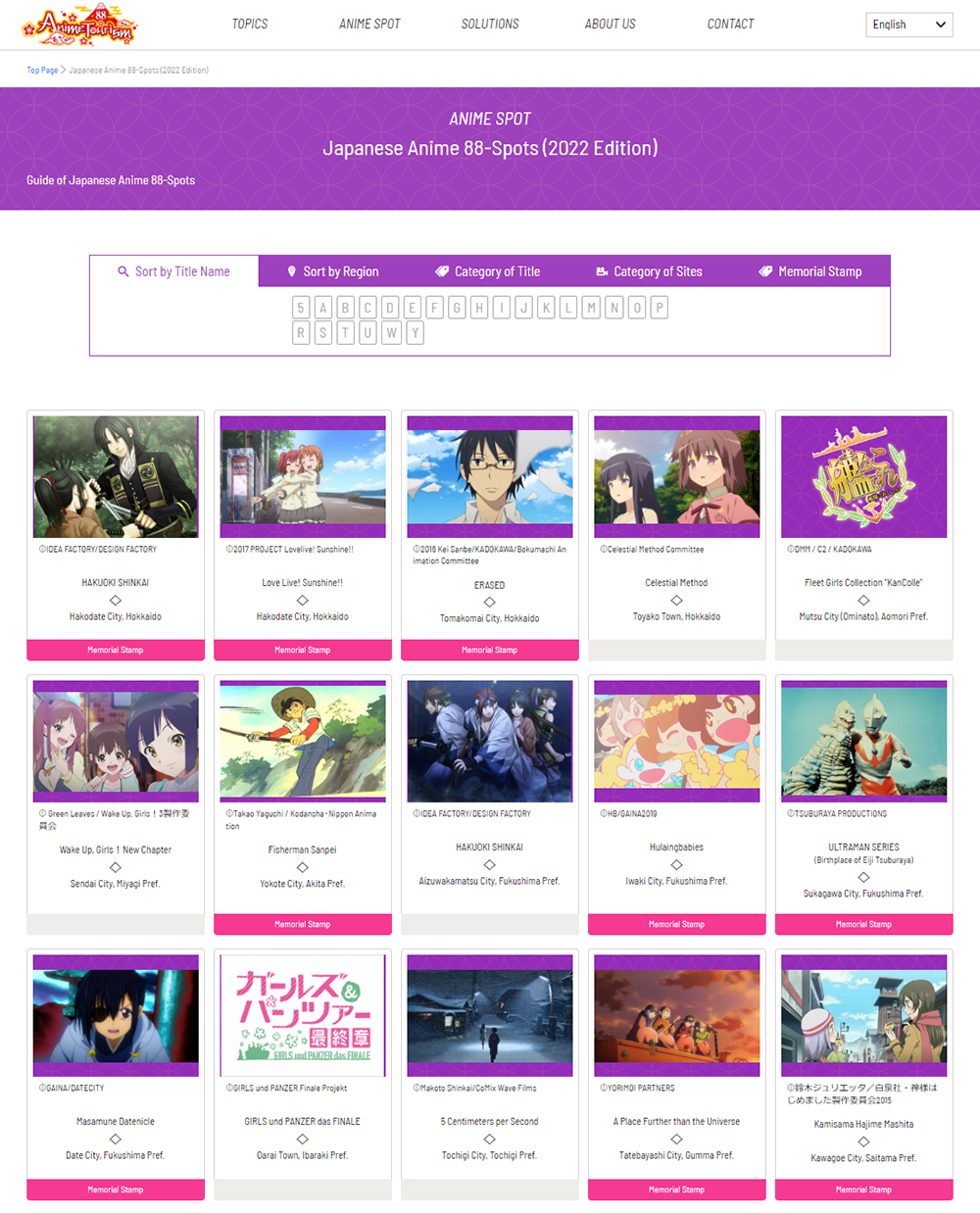- In an “Anime Pilgrimage,” which is a visit by anime fans to locations where their favorite anime have taken place, KADOKAWA assists the cycle of collaboration of fans, the anime work, local regions, and related companies to contribute to sustainable regional development so these visits do not end up as a short-lived fad.
- In regions where the collaboration cycle has been established, the snowball effect continues such as the examples of fans asking for cooperation in the re-building of damaged local facilities and continuous new product development in the shopping district of a small town.
- By offering cultivated knowledge and know-how to the Anime Tourism Association, KADOKAWA supports the creation of a system that allows many people to use anime tourism for contributing to local regions without being restricted by copyright holders of the anime work.
Recently, we are hearing more frequently about “Anime Pilgrimage” that fans are visiting locations where anime productions took place or that were the inspiration or model for an anime. What kind of activities are being carried out locally and by whom?
KADOKAWA has been working on various initiatives using its intellectual property mainly for anime for some time now. Among these efforts, the main initiative is the promotion of “anime tourism” which leads to regional revitalization.
Many anime take place in actual locations, and these locations have started to be called “Anime spot” by anime fans. Many anime fans have actually begun to visit these locations to experience the same food that appears in the anime and take pictures recreating scenes in the anime. These visits have given birth to the “Anime Pilgrimage” boom.
Anime Pilgrimage has been originally a pleasure of, by, and for anime’s fans. Local residents in these destinations have been pleased with the attention from the anime visitors but if these regions become complacent and do not do anything, the fans will stop coming sooner or later. It has been said that activities to connect this trend to sustainable regional promotion as anime tourism are necessary so fan visits do not end as a short-lived fad.
One activity is connecting the region as “Anime spot,” local companies, and content holders to the promotion of services and products by using the content. At the same time, a new economic effect can be expected from the creation of an environment to welcome fans in these regions. In addition, for us, KADOKAWA, it is an opportunity to return the favor we receive from local regions during anime productions by directly contributing to regional growth where the anime took place.
KADOKAWA was the first company in the industry that worked to realize the anime pilgrimage to regions in a format that enables all related parties including fans to benefit from these fan visits by coordinating and connecting various related parties to each other.
A typical example is Washinomiya (current Kuki City, Saitama Prefecture) in “Lucky Star.” “Lucky Star” was first published by then KADOKAWA SHOTEN (current KADOKAWA)’s Comptiq magazine in the format of a four-panel comic strip. It later became an animated TV series in 2007. Two of the four main characters are twins, Kagami and Tsukasa Hiiragi, who are the daughters of the Shinto priest at “Takanomiya” Shrine. On their days off, the duo help their father as Shinto attendants.
In the animated series, the illustration of Takanomiya Shrine was inspired by Washinomiya Shrine, and ever since the beginning of broadcasting of the animation, Washinomiya Shrine has become a destination for fans. Furthermore, KADOKAWA SHOTEN’s anime magazine featured Washinomiya Shrine as a model, which resulted in visits by even more fans.

©Kagami YOSHIMIZU/Lucky Paradise
Back then, anime fans were visiting the site individually, and there was no coordination for fans visits between any parties, and the media reported concerns over the sudden influx of so many visitors in an unprepared small town. Later, the local chamber of commerce launched discussions and worked with the fans. Furthermore, KADOKAWA SHOTEN suggested the holding of events, and at the end of 2007, the Lucky Star Anime Production Committee including KADOKAWA SHOTEN held an event featuring the manga author and voice actors of the four main characters that drew about 3,500 fans. In addition to this event, due to the surge of enthusiasm for various related measures by the local community, Washinomiya Shrine welcomed 300,000 visitors for New Year’s visits in 2008, exceeding the average number for past years by 170,000 visitors. As a result, a wide variety of media outlets reported on Washinomiya as a successful example of an anime destination where fans, the community, and right holders of the anime worked together.
Since then, the local community has continued implementing feasible and sustainable activities under the leadership of the local chamber of commerce. For example, the shopping district sells original anime products and holds a stamp rally where participants collect stamps from different places in the shopping district. Even now, 15 years after the anime was originally broadcast, the long-lasting positive relationship between the community and the fans continues as evidenced by fan support for re-building the Torii gate at Washinomiya Shrine.
For the purpose of working on this type of anime tourism as an industry, the Anime Tourism Association was established in 2016. KADOKAWA provides staff members as well as knowledge and know-how cultivated over the years to the association. We try to have as many people as possible benefit from the anime tourism equally.
The Anime Tourism Association conducts a web poll of Japan’s Anime spots with fans of Japanese anime worldwide and selects the Japanese Anime 88-Spots every year. In addition, the association aims to create extensive sightseeing routes connecting anime sites in an “All-Japan” effort where the private and public sectors work in cooperation together.
“The key in anime tourism is the collaborative relationship of the fans, anime work, region, and private businesses. The relationship needs to be one of collaboration that starts with the fans and consists of anime work supported by the fans, region where the anime takes place or region used as the model in the anime, and private businesses that offer products or services in the region, where maintaining a balance with an awareness of creating new things together is important. These four parties need to respect each other and exchange opinions to enhance the value so sustainable, not tentative, promotion of the region is realized with animation tourism,” says Tamaki Teraya, Director & Chief Secretary, Anime Tourism Association. (*The title was as of the interview.)
So, how should the collaboration cycle by the four parties be rotated? Another successful example of this collaboration is “A Place Further than the Universe” (known as “Yorimoi”) anime that takes place in Tatebayashi City, Gunma Prefecture and the support by its local community.

©YORIMOI PARTNERS
Coupled with the greatness of the anime work itself where high school girls in Tatebayashi build friendships and grow while developing the dream of visiting the Antarctica, many fans began visiting Tatebayashi, and triggered by a request from local business, a wide variety of collaborative products with the anime were planned and realized. The success is said to be a result of the initial collaborative products that were created in reflection of the thoughts of both fans and the community.
The Anime Tourism Association, which acted as a facilitator, first focused on local eating and drinking establishments and Japanese confectionary stores, that are more passionate about the anime “Yorimoi” than anyone else. The association worked as a coordinator between the stores and the anime copyright holder and provided advice and supervision/support for the creation of products. The project started from collaborative products with four local stores.
“The association does not work on products to be sold nationwide by large manufacturers under license. What the association seeks is collaboration with unique products that are only available in the region. The products must be something that fans will look forward to purchasing when visit the Anime spot or the products could be the reason for their visit. We would like to connect collaborative products and talks between fans and staff at the stores to opportunities for fans to learn more about what the region can offer and to make the fans want to come back again.” (Teraya)
Later, discussions over new product development also advanced and momentum to take full advantage of the connection built via “A Place Further than the Universe” is heightened among people who came to know the anime “Yorimoi” or the region.

The wide variety of anime shows makes locations which residents take for granted into special sites for fans and tourism destinations that are admired by fans not only in Japan but from around the world. Continuously producing quality anime creates new tourism resources and leads to sustainable promotion of the regions in the broad perspective.

